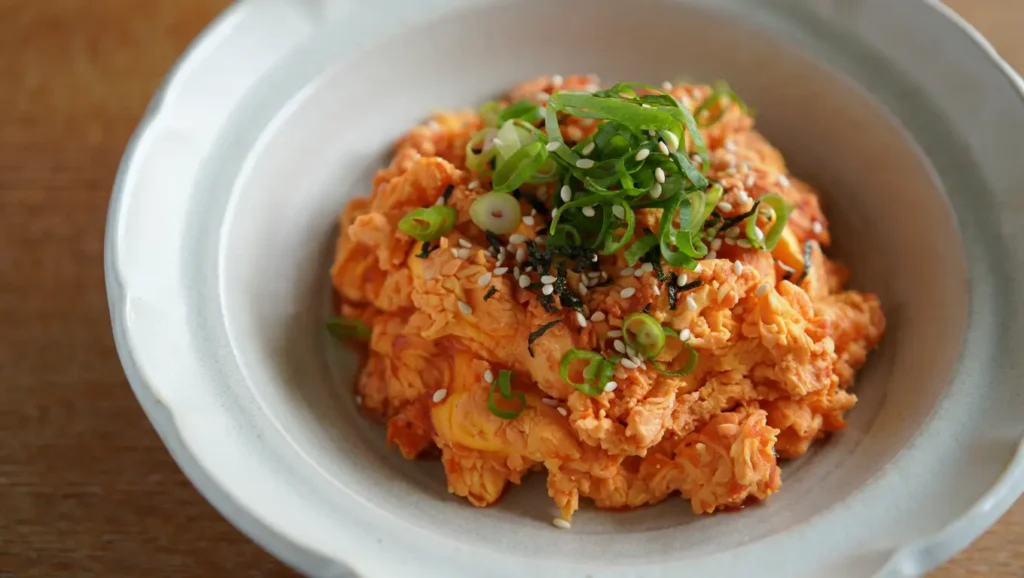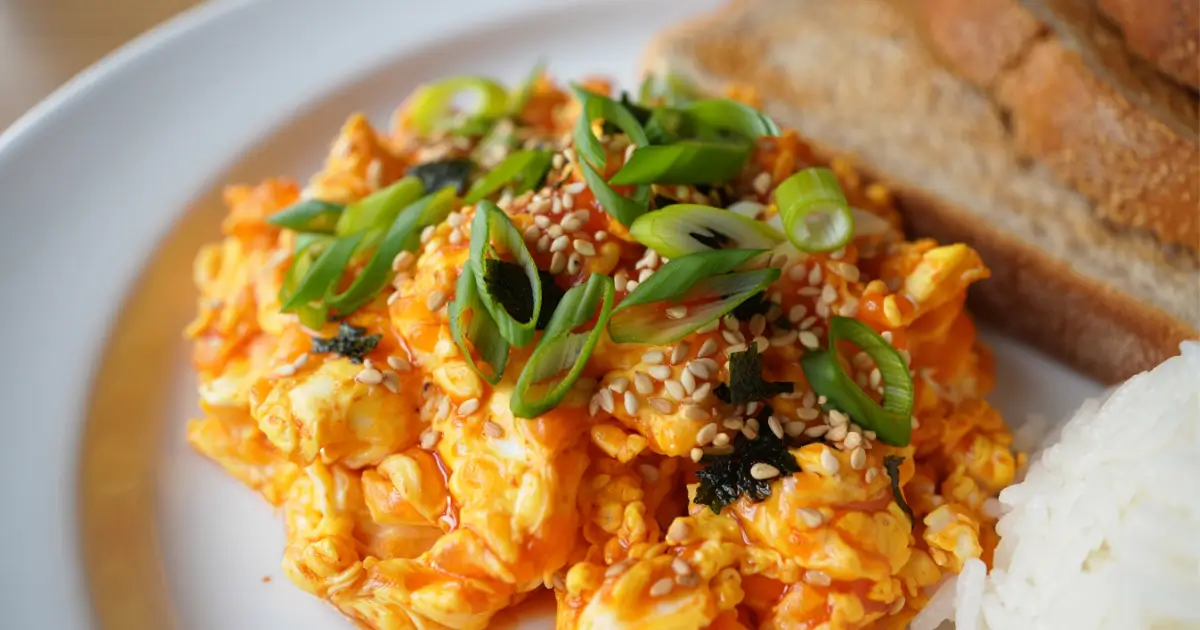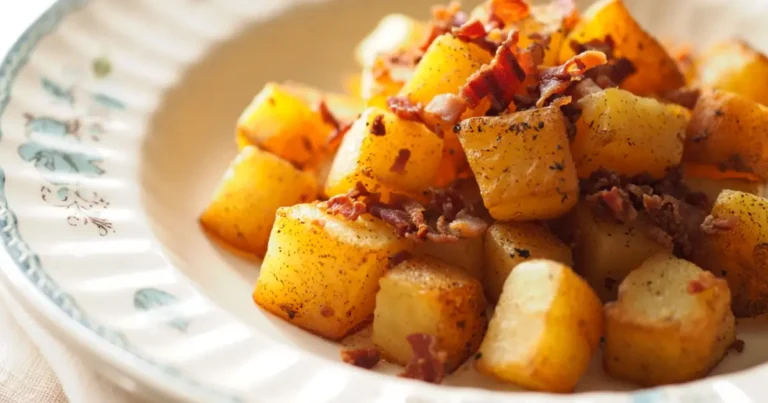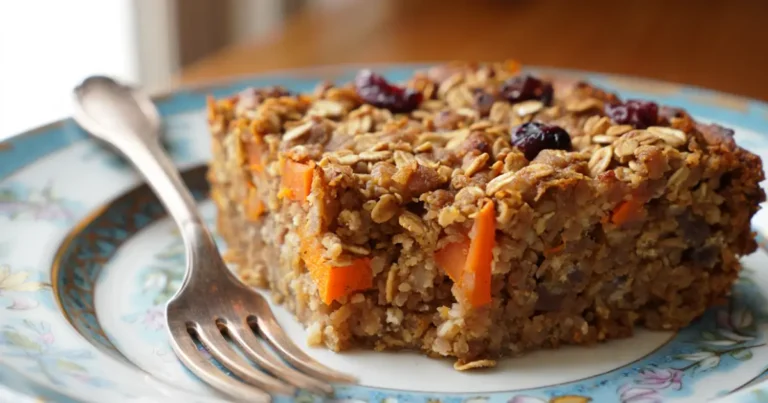Gochujang Scrambled Eggs: Easy Recipe
Why You’ll Love These Gochujang Scrambled Eggs
Looking to level up your everyday scrambled eggs? Gochujang Scrambled Eggs are here to shake up your breakfast (or brunch) routine with rich flavor, a subtle kick of heat, and an irresistible creamy texture. This Korean-inspired twist combines the silky softness of well-cooked eggs with the umami-packed, spicy-sweet flavor of gochujang—a fermented Korean chili paste that’s been a staple in Korean cuisine for generations.
Whether you’re already a fan of Korean flavors or just looking for something exciting to make with eggs, this recipe is simple, quick, and deeply satisfying. You don’t need any special culinary skills—just a few key ingredients and about 10 minutes of your time.
Table of Contents
Ingredients List
Here’s everything you need to make Gochujang Scrambled Eggs for two people. This recipe can be easily scaled up for more servings.
Basic Ingredients:
- 4 large eggs
- 2 tablespoons whole milk or heavy cream (for creamier eggs)
- 1 tablespoon gochujang (adjust to taste)
- 1 tablespoon unsalted butter (or use oil if dairy-free)
- 1 teaspoon soy sauce (adds depth and saltiness)
- 1/2 teaspoon sesame oil
- 1 green onion, thinly sliced (for garnish)
- Salt, to taste
- Black pepper, to taste
Optional Toppings:
- Toasted sesame seeds
- Crumbled seaweed (nori)
- Kimchi on the side
- Avocado slices
- Steamed rice or sourdough toast for serving
Step-by-Step Cooking Instructions
1. Prep the Ingredients
Before you turn on the stove, it’s best to prep everything. Scrambling eggs goes quickly, and you want to be ready.
- Crack 4 eggs into a mixing bowl.
- Add the milk or cream, soy sauce, and gochujang.
- Whisk vigorously until the eggs are fully blended and the gochujang is incorporated evenly. You want a smooth, slightly reddish mixture.
Pro Tip: Use a fork or small whisk and go for 30–45 seconds. This adds air to the eggs and ensures a soft, fluffy scramble.
2. Heat the Pan
- Place a nonstick skillet over medium-low heat.
- Add the butter and let it melt slowly, coating the pan evenly.
Tip: Avoid high heat—it’s the enemy of creamy scrambled eggs. Patience pays off here.
3. Cook the Eggs
- Pour the egg mixture into the pan and let it sit for 10–15 seconds.
- With a silicone spatula, gently stir the eggs from the edges toward the center. Continue stirring slowly and consistently, letting the curds form.
- When the eggs are about 80% cooked (still slightly wet but not runny), remove the pan from heat.
- Add the sesame oil and stir gently one last time. The residual heat will finish cooking the eggs.
4. Garnish and Serve
- Transfer your Gochujang Scrambled Eggs to a plate or a warm bowl.
- Garnish with sliced green onion, sesame seeds, or crumbled seaweed if desired.
- Serve immediately with steamed rice, toast, or even wrapped in a tortilla for a spicy breakfast wrap.

Tips and Tricks for Perfect Gochujang Scrambled Eggs
Use Fresh Eggs
Fresher eggs have a better texture and taste, especially when scrambled. If possible, choose free-range or organic eggs for richer flavor.
Don’t Overcook
The biggest mistake with scrambled eggs is overcooking. Take them off the heat just before they’re fully set—the carryover heat will do the rest.
Adjust the Heat Level
If you’re sensitive to spice, start with 1/2 tablespoon of gochujang. You can always increase it next time. For more heat, add a pinch of Korean red pepper flakes (gochugaru) or a dash of hot sauce.
Make It a Meal
Pair the eggs with rice and sautéed greens like spinach or bok choy for a complete, protein-rich breakfast bowl. You can even top it with a fried egg for double egg action.
Ingredient Substitutions
Don’t have everything on hand? No problem. Here are some easy swaps:
- Gochujang Substitute: Try a mix of sriracha and miso paste if you don’t have gochujang. It won’t be the same, but it’ll still be tasty.
- Milk or Cream: Use a splash of oat milk, almond milk, or even plain water if you’re dairy-free.
- Soy Sauce: Tamari or coconut aminos work great as gluten-free alternatives.
- Butter: Any neutral oil, like avocado or canola oil, will work fine if you’re avoiding dairy.
Variations to Try
1. Gochujang Egg Sandwich
Spread a little mayo on toasted brioche, pile on the scrambled eggs, and top with avocado or pickled veggies. It’s a spicy breakfast you’ll want every day.
2. Rice Bowl Style
Spoon the scrambled eggs over a bowl of hot jasmine or short-grain rice. Add sautéed mushrooms, spinach, and a drizzle of extra sesame oil or soy sauce.
3. Korean Breakfast Burrito
Wrap your gochujang scrambled eggs in a warm tortilla with rice, kimchi, and a bit of shredded cheese. It’s fusion in the best way.
4. Add Protein
Toss in some cooked bacon, tofu cubes, or sliced sausage during cooking for a protein boost.
Storage and Make-Ahead Tips
While Gochujang Scrambled Eggs are best fresh, here’s how to store leftovers if you’ve got them:
- Refrigerator: Store in an airtight container for up to 2 days.
- Reheating: Reheat gently on the stove over low heat or in the microwave at 50% power in short bursts, stirring between each.
- Note: Eggs can get rubbery when reheated, so don’t overcook them again.
Want to prep in advance? Whisk the egg mixture (with gochujang and other seasonings) the night before and store it in the fridge. That way, all you need to do in the morning is cook and enjoy.
Nutritional Benefits of Gochujang Scrambled Eggs
- High in Protein: Eggs provide all essential amino acids, making them a great protein source.
- Good Fats: Butter or oil and egg yolks offer healthy fats that keep you full longer.
- Spices That Help Digestion: Gochujang contains fermented ingredients that can aid in gut health and metabolism.
- Customizable: Easily adapt this meal for keto, gluten-free, or vegetarian diets.
Prep Time, Cook Time, and Servings
- Prep Time: 5 minutes
- Cook Time: 5 minutes
- Total Time: 10 minutes
- Servings: 2
Brief Conclusion
Gochujang Scrambled Eggs are the kind of recipe that takes just a few minutes to make but delivers bold, unforgettable flavor. It’s a great way to wake up your taste buds and break free from the usual breakfast routine. With their creamy texture, spicy-sweet notes, and rich umami depth, these eggs might just become your new favorite go-to dish—morning, noon, or night.
So go ahead, grab that jar of gochujang from the back of your fridge and let’s get cracking. Breakfast just got a serious upgrade.







